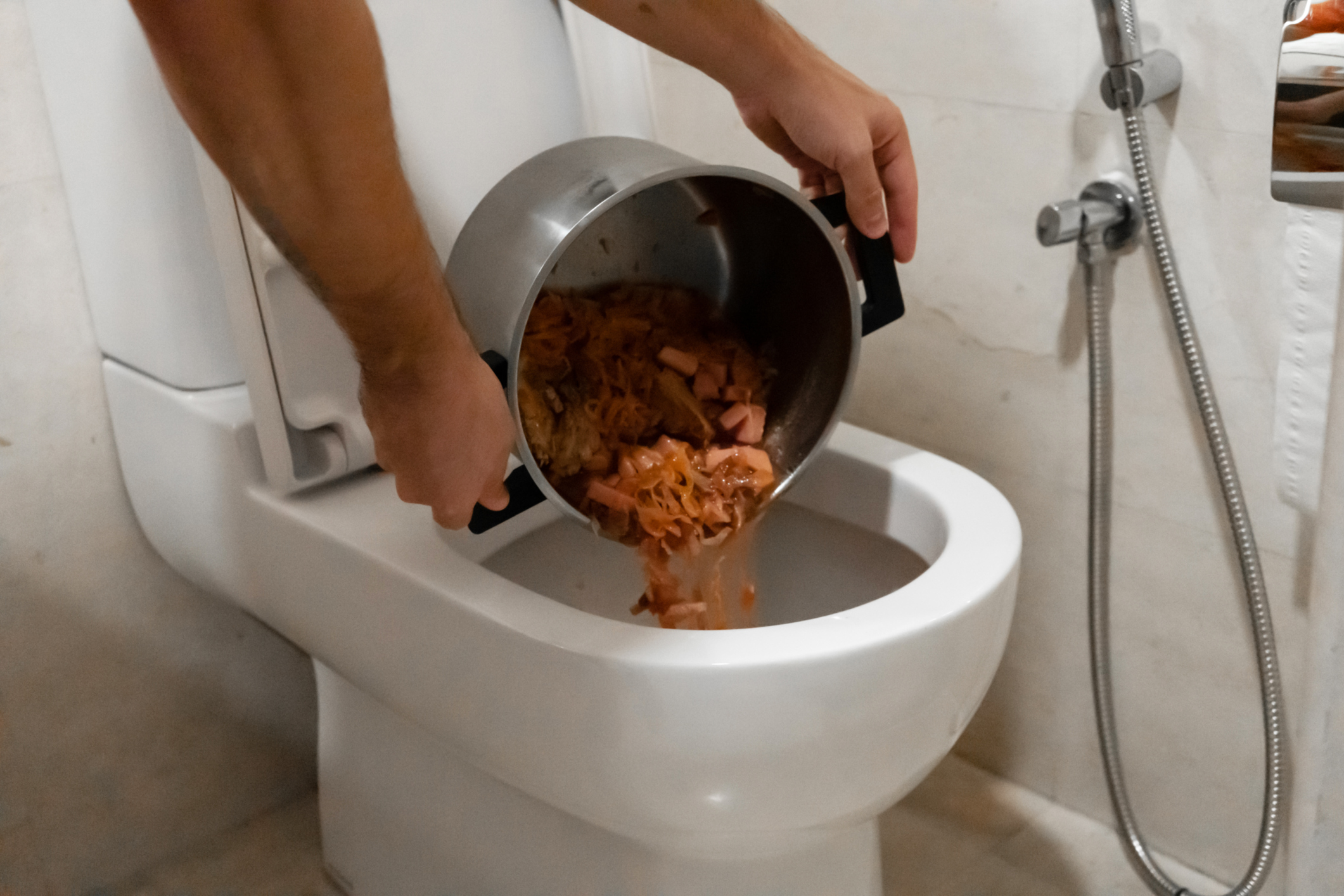Can You to Flush Food Down the Toilet?
Can You to Flush Food Down the Toilet?
Blog Article
They are making a few good observations relating to What Can Happen If You Flush Food Down the Toilet? in general in this article further down.

Intro
Many individuals are often confronted with the issue of what to do with food waste, especially when it pertains to leftovers or scraps. One common concern that occurs is whether it's okay to purge food down the bathroom. In this short article, we'll delve into the reasons that individuals might consider flushing food, the effects of doing so, and alternative methods for proper disposal.
Reasons that individuals may think about purging food
Absence of awareness
Some individuals may not know the prospective harm caused by purging food down the toilet. They may wrongly believe that it's a harmless technique.
Ease
Purging food down the commode may feel like a fast and easy service to taking care of undesirable scraps, specifically when there's no nearby trash bin available.
Negligence
In some cases, individuals may simply select to flush food out of large negligence, without taking into consideration the consequences of their activities.
Consequences of flushing food down the commode
Environmental effect
Food waste that ends up in waterways can add to contamination and injury aquatic environments. Additionally, the water used to purge food can strain water resources.
Pipes problems
Flushing food can cause blocked pipelines and drains, causing pricey plumbing repairs and troubles.
Kinds of food that need to not be purged
Fibrous foods
Foods with coarse textures such as celery or corn husks can obtain entangled in pipelines and cause blockages.
Starchy foods
Starchy foods like pasta and rice can soak up water and swell, leading to blockages in pipelines.
Oils and fats
Greasy foods like bacon or food preparation oils must never ever be purged down the toilet as they can solidify and create clogs.
Proper disposal approaches for food waste
Using a waste disposal unit
For homes outfitted with garbage disposals, food scraps can be ground up and flushed through the plumbing system. Nonetheless, not all foods are suitable for disposal in this way.
Recycling
Certain food packaging products can be recycled, reducing waste and reducing ecological effect.
Composting
Composting is an environmentally friendly way to get rid of food waste. Organic products can be composted and made use of to enrich dirt for horticulture.
The significance of proper waste monitoring
Lowering ecological damage
Appropriate waste administration practices, such as composting and recycling, aid decrease contamination and maintain natural deposits for future generations.
Securing pipes systems
By staying clear of the technique of flushing food down the bathroom, property owners can prevent costly plumbing repairs and keep the stability of their plumbing systems.
Verdict
Finally, while it might be appealing to purge food down the toilet for ease, it's important to comprehend the prospective consequences of this activity. By taking on correct waste management methods and taking care of food waste properly, individuals can add to healthier plumbing systems and a cleaner environment for all.
FLUSH FOOD DOWN THE TOILET?
FLUSHING FOOD CAN CAUSE BLOCKED DRAINS IN YOUR HOME
All of the plumbing fixtures in your home are connected to the same sewer pipe outside of your home. This outdoor sewer pipe is responsible for transporting all the wastewater from your home to the Council sewer mains. Even small pieces of food that go down the kitchen sink can cause problems for your sewer. It should therefore be obvious that flushing larger bits of food, such as meat, risks a clog in either the toilet itself or the sewer pipes. Flushing greasy food is even more problematic because oil coagulates when it cools, coating the interior lining of your pipes.
THE TOILET IS NOT A BIN
Food isn’t the only thing that people shouldn’t be flushing down the toilet. People use the toilet to dispose of all kinds of things such as tampons, makeup wipes, dental floss, kitty litter and even underwear. Water goes to great lengths to educate residents about the high costs and stress placed on wastewater treatment systems simply from people flushing the wrong stuff down the toilet. It costs taxpayers millions of dollars each year, and homeowners thousands in blocked drain repairs.
FLUSHING FOOD IS A WASTE OF WATER
Flushing food is a waste of our most precious resource - water. In June this year Level 1 water restrictions were introduced to protect water supply from drought conditions. Much of New South Wales continues to be affected by prolonged drought with recent figures revealing up to 97 per cent of the state remains in drought. Depending on whether you have a single or dual flush toilet, every single flush uses between five and 11 litres of water. In the current climate this is a huge amount of water to be wasting on flushing food that should be placed in the bin (or better yet, the compost).
https://www.jabplumbingsolutions.com.au/blog/can-you-flush-food-down-the-toilet

Do you really like reading up on Is it safe to flush food (especially rice) down the toilet?? Post a remark further down. We'd be happy to hear your ideas about this entry. We are looking forward that you come back again soon. Sharing is caring. You won't know, you might be doing someone a favor. Thank you for your time spent reading it.
Visit Report this page